The last three years have brought the passage of significant life events: 2014, the death of my mother; 2015, the completion of the last of the major work on my house; and 2016, my retirement from full-time work.
In the event, things have gone about as I expected over the last months, not surprising given the long time for planning. I am, so far, very happy with the experience.
My major interests have continued. I play the piano, read and do some artistic activity nearly every day. I also go running through the sand dunes at Crane Beach almost daily, weather permitting.
Other things have come naturally. The more time I spend at home, the more I value having a clean and orderly place to live. Mostly, that's a matter of routine, but there are odds and ends that have accumulated over the years that need to be dealt with, piece by piece: my father's childhood train set, with station made by his father and grandfather; the kitchen light fixture that wouldn't go in fifteen years ago because of hidden obstacles buried in the ceiling structure; pairs of shoes that are wearable for informal occasions but never get worn. The number of cardboard boxes I own is down to very few, except for the books – and I've identified the bookshelves I want to get, needing just to do a little more measuring and place an order.
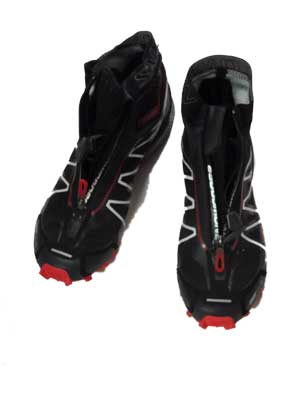
The sequence of snow, then rain, then freezing temperatures over the last couple of days left some slip surfaces around. A while ago, when a little unexpected extra money came in, I spent half of it on running shoes designed for such situations. This morning, I had the chance to try them out while the terrain was mostly still fairly mild.
I was very pleased. They have hard rubber cleats that provided excellent traction on hard-packed snow. They also have smaller tungsten carbide lugs intended for hard ice. I made good time on the first time out with them. (It was a bit frustrating trying to figure out how to loosen the easy-tie laces, in the absence of any real directions. In the end, the answer was easy: squeeze the bottom of the fastener while pulling up on it.)

I was a bitter resister to Amazon in its early days, as I watched my beloved bookstores close, one by one. Today, I am not an Amazon fan – I buy preferentially from just about anyone else when that isn't a clear sacrifice – but I have to admit that Amazon is part of my life, and adding to it things that used not to be feasible. And it spares me many dreaded trips to that place of last resort, the mall.
In retrospect, the closure of so many bookstores was not attributable to Amazon, though Amazon certainly hastened the extinction process. Books were becoming a commodity. Ma and Pa couldn't compete with their store.
Amazon's key success was building a distribution system for consumer goods, just as Microsoft's success was building an operating system for personal computers and Facebook's establishing the primordial social network. None of them will last forever, or even for more than a few decades. That doesn't take away the credit for the idea, or the blame for the harm to others that the monopoly and greed create.
My latest Amazon purchases are humdrum, rechargeable AA batteries and a charger, wicks for my humidifier. The wicks weren't available at any local spot, as far as I could find. Probably the batteries and charger were around somewhere, but it would have taken me several stops to find them.
Amazon, to its credit, and the benefit of its pocketbook, has established relationships with small vendors, offering them a public portal. Frequently, these folks have things that are hard to find anywhere else. And Amazon's clout, one imagines, is enough to make them behave, if they weren't inclined to of their own volition.
Don't worry, I am not going to start to eat at McDonalds, or like Windows or Facebook, or take gun nuts as sane people with views worthy of attention, or think of our President-elect without being sick to my stomach.

I love the winter solstice. It means that the days will start getting longer again. The sun will continue to rise later in the morning for a few more days, for geometrical reasons which I never quite managed to understand, but the sun will set later.
My mother ![]() remarked to me that the seasons lag about a month behind the celestial events. I've found that that's a pretty good way to think about it. It will (probably) keep getting colder for another month. Then it will likely continue in that vein, but with a hint of relaxation as March approaches. By that time, there will be a lot of light, and spring fever will have set in.
remarked to me that the seasons lag about a month behind the celestial events. I've found that that's a pretty good way to think about it. It will (probably) keep getting colder for another month. Then it will likely continue in that vein, but with a hint of relaxation as March approaches. By that time, there will be a lot of light, and spring fever will have set in.
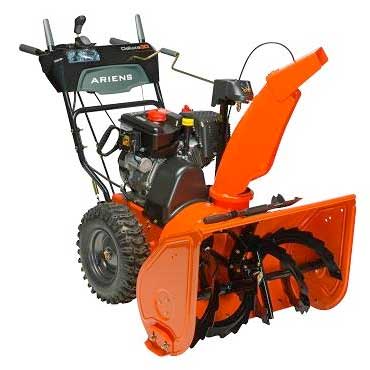
Working on cars and equipment with gas engines is a favorite passtime for many, a sometime rite of passage and demonstration of masculine ability. The neighbors across the street seem to be in their seventh heaven in the pursuit. I can't stand it at all, I don't know why. I'm quite in my element working on a dirty old house project.
Disliking something and not really knowing how to do it may go together, as my recent reading observed. I'd like to think that the chicken of my distaste for gasoline engine repair came before the egg of the limitation in my abilities, but who knows.
At any rate, I overcame my dread and aversion over the weekend. I suppose I could have called service centers to come and deal with the equipment, but that process often ends up taking longer that simply grabbing the bull by the horns. As one previous service manager remarked to me, nine times out of ten, the problem is that gas isn't getting from the tank into the engine. He was right. My snowblower and brush chipper are now working again. I am feeling pleased with myself that I managed to do it. The grit and the gasoline odors are washed off of me and the work clothes. It looks like the snow that's starting right now won't be enough to call for power equipment, but actually that's fine with me.

A couple of days ago, Emily, a staff member at Crane Beach, asked me if I'd seen any snowy owls in the dunes. I hadn't and didn't that day, perhaps because it was such a windy day all birds of all varieties had battened down the hatches and were remaining in secure locations. I did go home and looked up snowy owls in the Cornell University site All About Birds. This gave me an idea of what they looked like and where they hang out, which is close to the ground, rather than in the treetops as I would have expected.
Today, I did see one. It was quite a large and striking bird. On the one hand, it was so directly in front of me that my bird studies may have had nothing to do with my seeing it. On the other hand, I've been through that area countless times over the years without seeing a snowy owl, so it seems a bit of a stretch to call it a coincidence. In either event, it was exciting. I hope I see more snowy owls.
This picture isn't of the one I saw, but an image from the Cornell site.

After the invasive and aggressive Norway maples are removed in the yard, indigenous species appear. Frequently their growth has become lopsided as they struggle in whatever direction light may be available underneath the dense canopy of the maples. They are thin because they are naturally slower growers and unnaturally starved for sun by their alien competitors. Often they are interesting and valued varieties well-suited to thrive in what is after all their native environment.
With strong leans, however, they are very vulnerable to falling under a heavy snow load. If there is some vertical growth, the angular leads can be cut back to steer growth into a more upright direction. This can be a tricky and dangerous business, however, since they're of some height but not strong enough to climb.
One strategy for occasional and very cautious use is to cut the limb not quite through to the breaking point and then to use a long rope and winch to pull it down from an appropriate remote location. You need another tree in the right place to anchor the winch for this trick. And in making the cuts partially through, you need to be exquisitely attentive to any sign that the trunk is beginning to move. It is rather nerve-wracking.
After removal of a large Norway maple, a couple of twigs of this elm have grown into significant limbs. I'm not sure how the tree will take to having half of its growth removed. I watched and thought about it for about three years before deciding to proceed. To be cold-blooded about it, there didn't seem to be a good alternative. We will see in spring how things go. If the tree compensates well for its surgery, I can more gradually shape it to a vertical direction.
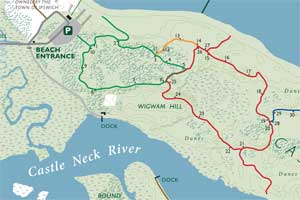
My usual course through the sand dunes is between three and four miles. Running on sand requires about 1.6 times more energy expenditure than does running on a hard surface. Today, for the first time, I made it through the whole course at a running gait, without stopping to rest to catch my breath. (Actually, I walked perhaps 0.2 mile of it to talk with another visitor, but that was along an easy and firm downhill section of the trail.)
This was not a preset goal. When I first started, a year or so ago, running was a very experimental matter for me, something I hadn't done since high school gym. I began by alternating spells of running and walking, one hilltop to the next. After a while I grew more comfortable and slowed to a walk only for the steepest hills, which approach a slope of 30°.
The effort required varies considerably from day to day. Wind flattens the sand, rain and the occasional all-terrain vehicle wheels pack it down. Foot traffic stirs it up. Heat and humidity slows most people down. Today the sand was in a relatively firm state, with a temperature of 37° – close to an ideal situation for the purpose.
I presume the regular habit is having an effect on my body, though not making any change I can sense from day to day. Or perhaps I could have done the same a year ago, but didn't know that I could. At any rate, when I first tried it, I was very diffident – thinking back to unempathetic high school peers – but it feels good to be able to do such things for the first time at age 68. Life could be much worse. Let's see how it goes from here.
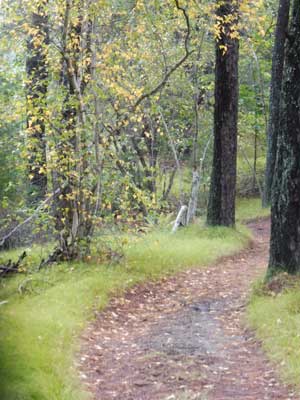
In the later part of the summer, we had the most extended and severe drought I can remember. Others around have made the same observation. The National Weather Service classified it as "extreme drought."
At last, it has broken with a few rains. It hasn't been enough to replenish the reservoirs and streams, but it has turned things green again. It almost looks like spring, except that tinges of color show that it is really turning to fall.
As of today, I am officially retired. Since it's a Saturday, it will be a soft beginning for this new phase.
It's been coming for a while.

I have a somewhat game left leg associated with a congenital neural tube defect. Until recently, I had not run since the days when the high school Phy Ed class had two laps around the gymnasium. Adolescent boys are competitive and unmerciful, and I consistently ended up near the end of the pack. I had chest pain that I now recognize as angina. Inducing that as a regular matter is a dangerous thing, but at that time and place, there was no complaining.
I happened to read a while ago that a football coach had his players practice in the sand because it built ankle strength. I tried brief spells of it in my time in the Crane Beach dunes last fall. It took me a while to figure out the situation and my abilities. At this point, I run three or four miles most days. As near as I can estimate, that's the equivalent of five or six miles on flat paved paths. That's better than I would have expected, and now it’s part of being alive for me.
Sometimes I stop for a minute or two to catch my breath or just to look at the scenery and wildlife. I walk up some of the tallest and steepest hills. That's fine. I go there to enjoy the time, and I don't want to turn it into a difficult or unwelcome experience.

Not long ago, I wrote that Johann Wolfgang von Goethe wrote such an amazing amount that no one had ever assembled a complete set of his works. I was mistaken. Now, I own such a set. There are forty-five volumes of his writings, plus four supplementary volumes.
It will take me a while to delve into this, to say the least. But his color theory – Zur Farbenlehre – was next on my reading list, as soon as I have finished off Freytag's Soll und haben.

Seagulls congregate around my commuter rail stop, especially in the morning. They perch on the peak of the building across the road and on the top of utility poles.
It is frequent that another seagull will fly down behind the one on the pole and take its roost. The approach is always from behind. From sound and turbulence, I guess, the sitting gull knows that another bird is approaching and courteously makes way. There is never any squawking or pecking or posturing.
A crow, if it has a pole top, will defend it very vociferously against usurpers. Perhaps seagulls are by nature vagabonds, without a lot of territorial instincts. What do you think?

As I was casually browsing the internet at lunchtime today, I came across the first specific evidence I've found that I have ancestors from Africa. Genetic testing had already pointed in that direction, but for lack of particulars I hadn't made much of it.
I had already established a path back through my Kentucky ancestors to one James Roberts, born 1773; his father, also named James Roberts, born about 1753; and the wife of the older James, named Jane. What I found today was a report that all three were free "mulattoes." The father is described in a contemporary listing as "a dark Mulatto about sixty-nine years old, 5 feet 2-1/2 inches high." He may have descended from Mary Roberts, born about 1664.
The early African-blooded Roberts appear to have come from indentured servitude rather than slavery. Wikipedia reports, "By 1650, there were about 300 Africans living in Virginia, about 1% of an estimated 30,000 population of people of English and European ancestry. They were not slaves but worked as indentured laborers, as did the approximately 4000 white indentured servants working out their loans for passage money to Virginia. Many Africans had earned their freedom, and they were each granted 50 acres (200,000 m2) of land when freed from their indentures, so they could raise their own tobacco or other crops."
Naturally, this information whets my appetite for more: understanding the early slave trade, life in colonial America, and – with luck – learning of the European Roberts. There can't have been that many Roberts families in Elizabeth City County, Virginia, in 1724!
I am somehow very pleased to find this firm link, though it scarcely accounts for a drop of my blood, supported both by documentation in contempary records and genetics. I have a similar link to Native American ancestors, and at least a couple to European royalty. Our country is a true melting pot.

I'm not an impulse buyer. I keep a list of things that pop into my mind as possible purchases, from a new keychain to an air conditioning system for my house. One of the oldest items on the list is an OED. The publishers have moved to an electronic format, saying it's unlikely that there will ever be another print edition. There are a few hundred copies left, priced at $1,000 a set. This has been true for the last few years, as I've watched.
A couple days ago when I was in an antique shop looking for something else, I saw a complete set of the twelve volumes of the First Edition, in very good condition. For a long time, I was especially slow to buy anything at a flea market or second hand shop; I couldn't figure out how far I should negotiate list prices. After a while, I identified a formula that has worked consistently for me: never pay more for anything than a quarter of what it's worth. I got this set for $10 a volume, which was well within my guideline. This edition is rather old, but so are most of the books I read, so that's not a problem
I also got two volumes of genealogy by Douglas Richardson. I explained to the man at the shop that these retail (used) for about $400 each, but the owner was happy to sell them for $10 apiece – and at that price, I was happy to buy them. They provide the best picture I can find of the link between my early American ancestry and European royalty.
Now, all I need to do is figure out shelf space for these volumes, and all of my other books. That's on my list.
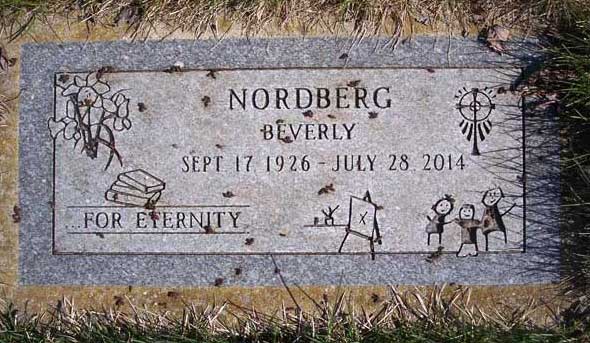
I read somewhere, a while ago, that the process of bereavement takes half a year to two years to resolve. I've found that to be a good estimate.
In a very real way, the tears and bereavement for my mother ![]() came five years before she died, when within a few days a stroke on top of progressing Alzheimer's took away the person I'd known and loved dearly for all of my life. We managed to remain dear to each other for almost all of the time after that. She didn't know my name or relationship to her, but our love remained. For my part, I learned how to communicate with her at a very basic, non-verbal level. For instance, she found certain kinds of touching and rubbing very soothing. In the very last months, she lost nearly all of her ability to interact with her environment, which is typical of that disease. This was hard for me because I could no longer do much of anything at all for her. In the end, as the creeping paralysis froze her body and mind to the limit, I recognized that the time remaining was very limited and felt a great sense of relief for both of us. As the phrase goes, what she went through shouldn't happen to a dog.
came five years before she died, when within a few days a stroke on top of progressing Alzheimer's took away the person I'd known and loved dearly for all of my life. We managed to remain dear to each other for almost all of the time after that. She didn't know my name or relationship to her, but our love remained. For my part, I learned how to communicate with her at a very basic, non-verbal level. For instance, she found certain kinds of touching and rubbing very soothing. In the very last months, she lost nearly all of her ability to interact with her environment, which is typical of that disease. This was hard for me because I could no longer do much of anything at all for her. In the end, as the creeping paralysis froze her body and mind to the limit, I recognized that the time remaining was very limited and felt a great sense of relief for both of us. As the phrase goes, what she went through shouldn't happen to a dog.
At this distance, I recognize that the intensity of the period lasted for a long time after it, as no doubt it should. After two years, there are more days that I don't think about my mother than days that I do. When I do think of her, it is more likely to be about interests or experiences that we particularly shared than about the period of her illness and decline.
I only recently managed to get a photograph of her completed cemetery marker. By now, it has begun to weather and the grass has grown around it. It is an image of completion and rest, and I in my turn am soothed by it.
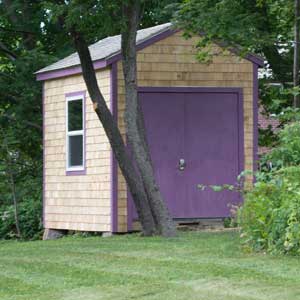
It's done. The area around it that I cleared has established grass. Now, all that needs to happen is for the shingles to weather to a gray color, and for Paul to move on to the next project.
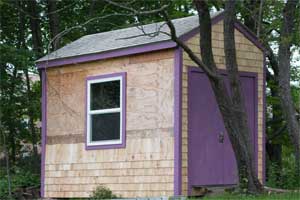
I framed a shed last year, with a roof and windows to keep things tight against the elements. I had fun putting on cedar shingles for the roof, something I hadn't done before. I set aside the rest of the work, planning to finish it in a year.
As the weather has become more clement, I have picked up the task of trimming and siding the exterior. It is a good kind of summer activity, not too strenuous for mind or body. It's rather like baseball in having a lot of moments of thinking of what will come next, with very brief flashes of activity.
The cedar shingles of the roof have very nicely turned gray. They have also, to my pleasure, stayed flat, not warping or cupping up. I went against some architectural practice and advice in installing them above a layer of wooden lath, carefully leaving air space underneath, rather than putting them on top of tar paper. Wood wants to have the same moisture (or dryness) on both sides. The task of keeping water out of the interior is handled in much the same way as it is with thatch roofing: there isn't an absolute barrier between above and below, but a justified reliance on the expectation that water will go down, with surface tension making it hug onto any adjacent surface for dear life.
Presumably the cedar shingles of the wall cladding will turn the same gray as the roof, with a longer time span (because rain goes sideways less than it goes down) and a bit less evenness (because some areas are more sheltered than others). I picked a purplish-gray color for the trim, expecting that it would recede against the lighter background of the weathered shingles. The lady at the paint store thought it would be rather visible. Perhaps so. My experience is that violet paints fade rather quickly in the sunlight, but pigment science is much more advanced than it was a while ago.
As an activity, installing shingles has some very desirable aspects. It isn't overly taxing, it can be picked up and set aside at will after a few minutes' or a few hours' work, and it provides immediate gratification in a way that all (including me) can see. What could be better?

I love mockingbirds. They sing an amazing variety of songs, repeating each call perhaps three times before moving onto the next, with endless diversity. Some summers they come and stay in my yard, some summers they don't.
In my recent trips to Crane Beach, I have found a mockingbird sitting and singing in the same tree each time I have passed by. I would have guessed that mockingbirds, as insect eaters, would move around freely. I haven't seen a nest in the tree. Perhaps one is nearby. Perhaps the bird is simply territorial, perching in the highest tree in its local area. My mother told me that on the farm in Kansas, the mockingbirds would sit on the windmill, and sing, and sing – and they wouldn't let any other birds onto the windmill.
People have various tricks to attract bluebirds, or finches, or hummingbirds, to their yards. I have not heard of a trick to attract mockingbirds.
For the last couple of years following my mother's death, I have pursued three goals that I set for myself during the caregiving period: to exercise regularly, to pick up my piano again whole-heartedly, and focus on my three-dimensional artwork. I have been successful both in following my pre-established program and, more important, in finding significant satisfaction in the activities. There was a bit of a "but" or "except" with the last. The three-dimensional artwork was delayed for a while with an extended foray into oil painting. So much the better.
The coming couple of years will notably be those of my transition into retirement. I am setting myself three new goals for this phase.
First, I would like to broaden my circle of friends and acquaintance. This is of particular meaning because I am, quite unintentionally, without any close family at this point.
Second, I would like to develop some loose structure for spending my time. I don't want a rigorous schedule (like those of Immanuel Kant or my father), followed to the minute each day. Neither do I want to flit like a butterfly from whim to whim. There are more than enough activities to fill the hours, but many of them are much more suitable for early in the day, when my mind is fresh, than toward the end, when concentration and creativity wane. Activities with others will need to fit their schedules.
Last, I would like to refine my financial plans. I fully expect that my resources will be adequate for my modest desires and needs. Still, the habits of life to date will probably not fall away instantaneously. One of those has been to have more coming in than going out. Curiously, this fundamentally reasonable approach, overdone, leads toward an tendency to regard money as something to be simply hoarded, rather than exchanged for desired goods and services. There should be some way of taking care of basic needs, having some treats and deferred wishes, and leaving enough for unplanned needs – and sharing with others, during my life or after.

Earlier this week, I read a striking passage in Between the Woods and the Water in which the narrator finds himself in close proximity to a pair of golden eagles. Yesterday and today, for the first time in my life, I sighted a golden eagle in the sky, as I was walking along at Crane Beach. I presume that this is a case of recognizing something that's been there all along.
The profile is suggestive, the white patches on the underside of the wings are characteristic of younger animals, and "golden eagles are unique among their genus in that they often fly in a slight dihedral, which means the wings are often held in a slight, upturned V," according to Wikipedia. Golden eagles are very large birds, with wingspans of six or seven feet. Even seeing one soaring far above was a thrill for me.
(The photograph is not mine. It is from allaboutbirds.org. Perhaps another day I will be lucky enough to bring home a photograph of one myself.)

I managed to get a picture from Crane Beach, not a great one but still a picture. It doesn't have the resolution of the one from allaboutbirds.org, but overall it's much the same, isn't it?
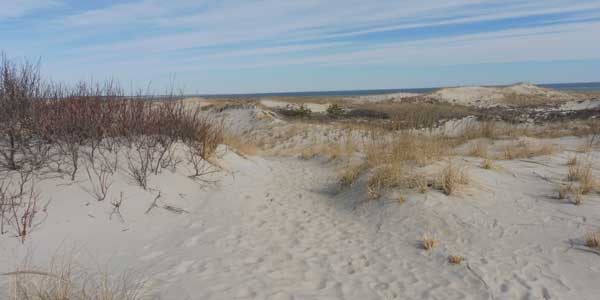
Crane Beach comprises an area of 1,234 acres, 4.99 square miles. Once one of the seasonal great estates of the North Shore, it was donated by Richard T. Crane, Jr., son of the founder of Crane Plumbing. Its features include some two miles of sandy beach, extended trails through surrounding sand dunes, extensive salt marsh areas, and the 59-room estate house.
I find myself going there nearly every free day that I have, weather permitting. I go running along the flatter and firmer paths, settling down to a walk where the going gets steep and sandy. I've been through most of its corners, but there are still parts of it that I don't know. I've never been in the mansion house or on Choate Island, a small getaway within the big getaway. There are many devoted wildlife observers and photographers, but I don't know where and how to look. I'm sure I'd enjoy it immensely if I did. For that matter, I think I would enjoy learning how to tell apart the different species of seagulls. In fact, I think I will work on it.
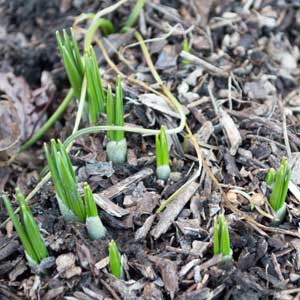
The spikes of early crocus are visible, sooner than I've ever seen them before in this area. Yesterday the temperature rose to 60° and today to 51°. I was turning over soil in my yard with a pitchfork, encountering earthworms in the process.
It will get colder again, and little doubt snow again, but a month from now will come astronomical spring.
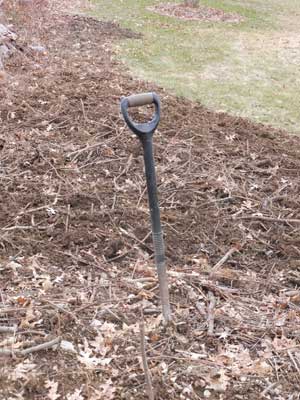
A year ago today, we had had four feet of snow in the previous week, a record for a seven-day period.
Today, it is 57° and mostly sunny. Not only is the day warm, but the winter has been mild so far. Rivers and ground are unfrozen, so that one can work at gardening activities, such as continuing the clearing I started toward the end of the summer.
It won't last; in fact, a couple of inches of snow are expected tomorrow. But we've made it through the typically deepest and coldest days of the winter. The days are becoming perceptibly longer, and there is hope in the air.
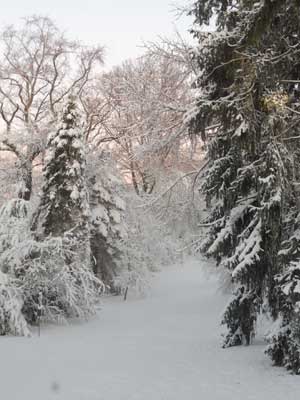
The next day, we had perhaps six inches of snow, a wet, sticky one.
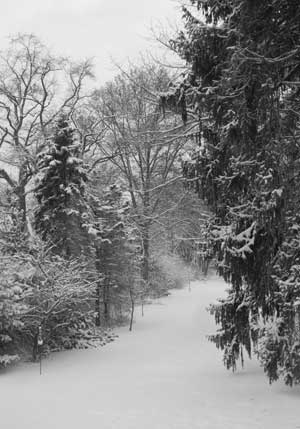
The first snow of the year was about four inches, light and a little bit sticky. I rather like snow, in moderate quantities.
Cleaning it up was not a big deal, especially in the middle of a three-day weekend. Unfortunately, the street plows find it convenient to simply push the snow onto the sidewalk, leaving it for the residents to shovel the sidewalks. It's not a very good system.
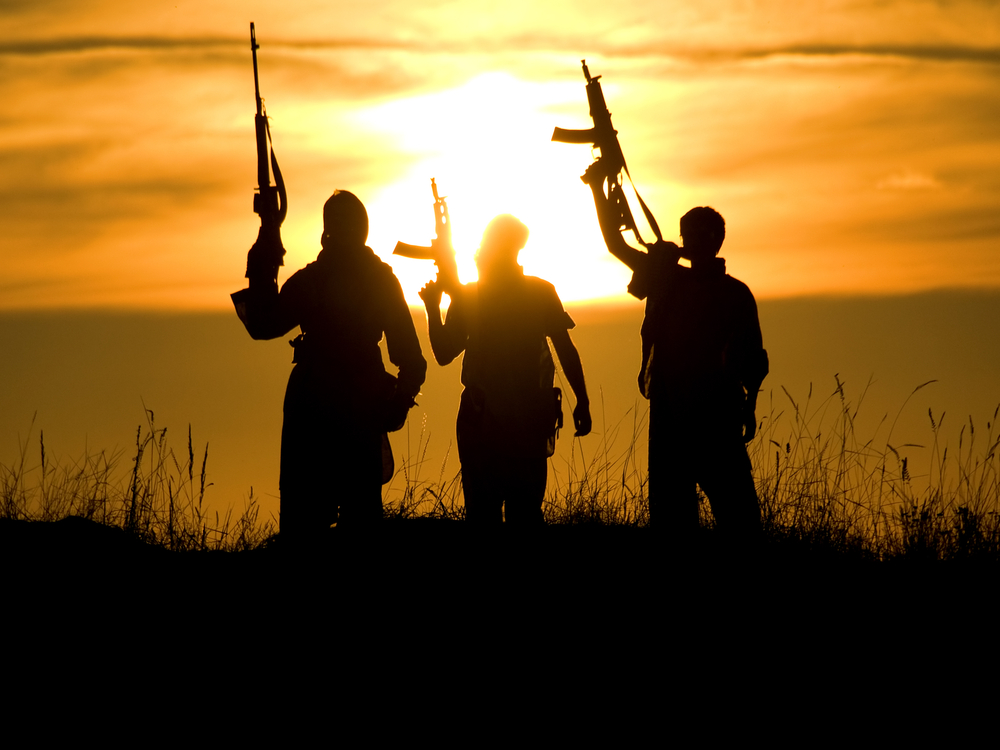
I won't pretend that I have a solution to terrorism, let alone one that fits with the values of democratic and tolerant society. I will make an unusual foray into the realm of political comment on this topic, however, because I do have some thoughts beyond mass deportations and carpet bombing.
To begin with what won't work: violence and hate beget violence and hate.
As a step in figuring out what might work, it may be useful to think about the conditions of today's world in relation to those before terrorism began its visible rise. This reflection suggests four observations to me. One, modern capabilities for instant world-wide communication are making much of the reason for geographically-based communities obsolete. Two, obsessive media attention to terrorist acts strongly encourages them. Three, some individual misconduct is the inevitable price paid for the trade from imperialism and totalitarianism to broad freedom and tolerance. While I entirely believe the direction of the trade is appropriate, some common acceptance of reasonable limitations on individual liberty – and reasonable contributions for individuals to make to the common welfare – might go far in reducing unacceptable dangers. Does that mean gun control? – Yes, it does. And four, yes, there are a few sociopaths among us who shouldn't be allowed to wander about freely, or occupy bully pulpits.
1. "X marks the spot."
If all of the "bad guys" stood together in a single place, isolated from the "good guys" – presumably us – it would be feasible to exterminate them by bombing. However, of all of the terrorist acts in the last decades that I can think of, most were committed by national residents under dispersed foreign influence, a few were committed by residents without foreign influence, and zero were committed by non-residents. Sending B-52s across the borders isn't going to fix it. Drop the idea, not the bombs.
2. "If it bleeds, it leads."
People act out to get attention, because they have learned that such behavior gets attention. The aim of terrorist acts is to create terror. The aim succeeds spectacularly precisely because mass communication makes it succeed. A story of a mass shooting is certain to monopolize the attention of the media instantly and then for a few days, and very likely to be followed in the near term by another act of mass violence. The connections are no accident.
The media of the time never showed or spoke of Franklin D. Roosevelt as unable to stand or walk unassisted, because that would have been considered grossly discourteous, just as making fun of a handicapped person is taken today as unacceptably offensive. In this era of decentralized communication, it would not be possible for the big media companies to prevent circulation of information about terrorist acts, even if that were desirable.
On the other hand, loud and protracted leads and headlines are unnecessary and less than constructive. The New York Times shows the slogan, All the news that's fit to print, but somehow sees fit not only to print, but to feature, loud and long, scurrilous bloody acts. I would much prefer an understated article, in the tone of an obituary, next to a perspective update: on the same day as (dozens) of people were killed in this act, (hundreds) died from other gun violence, and (zero) lives were saved from violence with assault weapons because a "carrying" private citizen used his pistol to stimy the planned attacks. That wouldn't instantly sell newspapers, or improve Nielsen ratings, but it might contribute to norms about acceptably tasteful reporting.
3. "Second Amendment Rights"
I have no more sympathy for routine private gun ownership than I have for the notion that there is a fundamental right to bring one's unleashed pet tiger – or a backpack of hand grenades, or a canister of hydrogen cyanide – to church or the shopping mall or the sports arena, even under the claim of a need for self-protection or recreation. Our actions have effects on others, and the evidence is incredibly strong that gun ownership enables far more violence, and yes, terrorism, than it protects against. Believing otherwise is like believing in perpetual motion machines, falling into the category of invincible ignorance.
As members of a group, we need to follow certain norms in our individual behaviors. These include lesser restrictions on certain personal liberties in the interest of much more important liberties for the larger group.
4. Villains and leaders
There are a few people, such as Osama bin Laden and Anwar al-Awlaki, who openly and notoriously promote terrorism, securing great world-wide attention. There are others, such as Timothy McVeigh and Ted Kaczynski, who are isolates with grudges. It's easier to focus on those in the first category, because they are known. We can't prevent them from preaching their messages, but we can slow down some of the broad paths for their communications, just as we slow down Internet postings of instructions on bomb-making.
© 2026 Paul Nordberg